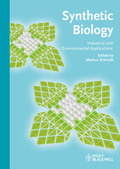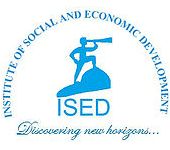| PLAN DU SITE | PHILOSOPHIE | HISTORY OF BIOLOGY | PHILOSOPHY | SITE MAP |
|
Liste des publications
|
Selected publications |
Publication list
|
Peer-reviewed publications are indicated in red
Publications in the domain of Philosophy, History of Sciences and Ethics
Publications listed at Google Scholar
2011 ![]() ,
metabolic bioremediation to cope with ageing
,
metabolic bioremediation to cope with ageing
|
|
PM Binder, A Danchin Life's demons: information and order in biology. What subcellular machines gather and process the information necessary to sustain life? EMBO Reports (2011) 12: 495-499 In his seventeenth-century classic, Novum Organum, Francis Bacon wrote, “we cannot command nature except by obeying her” (Bacon, 2010). Although our knowledge of living systems is much improved since Bacon’s time, we are still far from understanding—or commanding—all the complex mechanisms of life. To take full advantage of living organisms for the benefit of mankind, we will need to understand those mechanisms to the furthest possible extent. To do so will require that the concept of information and the theories of information science take a more-prominent role in the understanding of living systems... |
A Danchin
Les gènes du démon de Maxwell :
est-il possible de construire une usine cellulaire ?
Maxwell’s demon’s genes: Can we
build a cell factory?
Comptes Rendus de l'Académie des Sciences, Chimie
(2011) 14: 413-419 ![]()
| A Danchin, PM Binder, S Noria Antifragility and tinkering in biology (and in business): Flexibility provides an efficient epigenetic way to manage risk Genes (2011), 2: 998-1016; doi:10.3390/genes2040998 |
|
|
|
F Piette, S D'Amico, G Mazzucchelli, A
Danchin, P Leprince, G Feller Life in the cold: a proteomic study of cold-repressed proteins in the Antarctic bacterium Pseudoalteromonas haloplanktis TAC125. Applied and Environmental Microbiology (2011) 77: 3881-3883 |
| M Porcar, A Danchin, V de Lorenzo, VA dos
Santos, N Krasnogor, S Rasmussen, A Moya The ten grand challenges of synthetic life Systems and Synthetic Biology (2011) 5: 1-9 |
|
| H Rohde, J Qin, Y Cui, D Li, NJ Loman, M
Hentschke, W Chen, Fei Pu, Y Peng, J Li, F Xi, S Li, Y Li, Z
Zhang, X Yang, M Zhao, Peng Wang, Y Guan, Z Cen, X Zhao, M
Christner, R Kobbe, S Loos, J Oh, L Yang, A Danchin, GF Gao, Y
Song, Y Li, H Yang, J Wang, J Xu, the E. coli O104:H4
Genome Analysis Crowd-sourcing consortium, MJ Pallen, J Wang, M
Aepfelbacher, R Yang Open-source genomics of an isolate from a german family outbreak of Shiga-toxin-producing Escherichia coli O104:H4 New England Journal of Medicine (2011) 365: 718-724 |
|
| Y Wang, J Yang, OO Lee, S Dash, SC Lau, A
Al-Suwailem, TY Wong, A Danchin, PY Qian Hydrothermally generated aromatic compounds are consumed by bacteria colonizing in Atlantis II Deep of the Red Sea. ISME J (2011) 5: 1652-1659 |
|
|
Y Wang, JK Yang, OO Lee,
TG Li, A Al-Suwailem, A Danchin, P-Y Qian |
B Wilmes, H Kock, S Glagla, D
Albrecht, B Voigt, S Markert, A Gardebrecht, R Bode, A Danchin, G
Feller, M Hecker, M Schweder
Cytoplasmic and periplasmic proteomic signatures of exponentially growing
cells of the psychrophilic bacterium Pseudoalteromonas haloplanktis
TAC125.
Applied and Environmental Microbiology (2011) 77: 1276-1283
![]() Bloc-notes BoOks (en français)
Bloc-notes BoOks (en français)
Admiration
ou plagiat ?
Alfred
Döblin et la science
Scénarios romanesques:
virus contre bactéries multirésistantes
Esprit de géométrie,
esprit de finesse
En marge de l'histoire de
la Serbie, les déshérités Grecs et
Histoire de Petros Kokkalis
Le dangereux virus de la
rumeur
Avons-nous déshumanisé la
filiation ?
Épidémie de
conspirations
Ni Adam, ni Ève
A Danchin
I geni del diavoletto di Maxwell
Prometeo 117: 120-125
|
|
S Engelen, D Vallenet, C Médigue, A Danchin Distinct co-evolution patterns of genes associated to DNA polymerase III DnaE and PolC BMC Genomics (2012) 13: 69. |
|
|
|
Karsch-Mizrachi I, Nakamura Y, Cochrane G;
International Nucleotide Sequence Database Collaboration Miyano S, Nakamura H, Sugano S, Danchin A, Savakis B, Weissenbach J, Weng Z, Salzberg S The International Nucleotide Sequence Database Collaboration Nucleic Acids Research (2012) 40: D33-D37 |
|
|
|
MF Liu, S Cescau, U Mechold, J Wang, D
Cohen, A Danchin, HJ Boulouis, F Biville Identification of a new nanoRNase in Bartonella Microbiology (2012)158: 886-895 |
|
|
|
G Postic, A Danchin, U Mechold Characterization of NrnA homologs from Mycobacterium tuberculosis and Mycoplasma pneumoniae RNA (2012) 18: 155-165 |
|
| M Schmidt, M Porcar, V Schächter, A
Danchin, I Mahmutoglu Biofuels, pp L Pei, M Morange, R Armstrong, A Danchin, M Porcar Biomaterials, pp In: Synthetic Biology. Industrial and Environmental Applications (Editor M Schmidt), Wiley VCH, Weinheim (2012) |
 |
|
| E Toledano, V Ogryzko, A Danchin, D Ladant,
U Mechold 3’‐5’phosphoadenosine phosphate is an inhibitor of Poly(ADP-ribose) Polymerase 1 and a potential mediator of the lithium-dependent inhibition of PARP‐1 in vivo Biochemical Journal (2012) 443: 485-490. |
Blog / Bloc-Notes
Project Syndicate (multilingue)
The
biology of luxury (October 16th 2012)
| |
The
anti-fragile life of the economy ![]()


The anti-fragile life of the economy
may be its saving grace ![]()
A vida anti-frágil da economia ![]()
Antifragilität. Was die Wirtschaft
von der Evolution lernen kann ![]()
La vie antifragile de l'économie
![]() BoOks (en français)
BoOks (en français)
Chercheurs
de catastrophes : la morale grippée
Aurons-nous assez de coqs
pour vaincre la grippe ?
La loterie gagnante de
l'accident
L'américanisation soviétique du genre
|
|
CG Acevedo-Rocha, G Fang, M Schmidt, DW
Ussery, A Danchin From essential to persistent genes: a functional approach to constructing synthetic life Trends Genet. (2013) 29: 273-279. doi: 10.1016/j.tig.2012.11.001 ssq |
|
|
E Belda, A Sekowska, F Le Fèvre, A Morgat, D
Mornico, C Ouzounis, D Vallenet, C Médigue, A Danchin An updated metabolic view of the Bacillus subtilis 168 genome Microbiology (2013) 159: 757-770. doi: 10.1099/mic.0.064691-0 |
A Danchin
To understand and solve, share, foresee
Ludus Vitalis (2013) XXI: 263-265
|
|
A Danchin, A Sekowska Constraints in the design of the synthetic bacterial chassis Methods in Microbiology (2013) 40: 39-68 |
A pour Andromède : la biologie et ses lois
2014 ![]() ,
bringing the engineer's logic into play
,
bringing the engineer's logic into play
|
|
CM Chan, A Danchin, P Marlière, A Sekowska Paralogous metabolism: S-alkyl-cysteine degradation in Bacillus subtilis Environ Microbiol (2014) 16: 101-117 |
|
|
A Danchin, A Sekowska The logic of metabolism and its fuzzy consequences Environ Microbiol (2014) 16: 19-28 |
A Danchin
Comment effacer la mémoire de sa
mère, ou pourquoi les bébés naissent-ils très jeunes ?
L'Archicube (2014) 16: 55-61
A Danchin
The emergence of the first cells
Encyclopedia of Molecular Cell Biology and Molecular Medicine
(2014) doi: 10.1002/3527600906.mcb.20130025
Abstract The scenario proposed here builds
on the critical need for compartmentalisation at the
origin of life. In a first step, the surface of minerals
compartmentalised and selected the reactive compounds that formed
primitive metabolism. Subsequently, RNA molecules replaced mineral
surfaces after the discovery of nitrogen fixation and the emergence of
ribonucleotides, in parallel with a machinery for synthesis of
peptides, coenzymes and lipids. Then, the RNA-metabolism world
developed into an RNA-genome world based on RNA as informational
templates rather than substrates. Bordered by lipids, the first cells
were phagocytes, Protokarya, which put together two compartments
stemming from the RNA-metabolism world (the cytoplasm) and the
RNA-genome world (the nucleus). Emergence of stable
deoxyribonucleotides allowed the clustering together of genes into
chromosomes. Phagocytosis created the opportunity for an escape based
on an alternative metabolism of membrane lipids and conquest of
extreme environments, with the Archaea, and on the emergence of a
robust and phagocyte-resistant envelope, with the Bacteria. Reductive
evolution allowed bacteria with a modified enveloped to be phagocyted
again as symbionts of Protokarya, leading to the final generation of
the Eukarya. Continuation of horizontal transfer of the genetic
material initially resulting from phagocytosis was carried on with the
emergence of gene transfer via specialised conjugation machineries and
viruses.
|
|
Kyrpides, NC, Hugenholtz, P, Eisen, JA,
Woyke, T, Goker, M, Parker, CT, Amann, R, Beck, BJ, Chain, PSG,
Chun, J, Colwell, RR, Danchin, A, Dawyndt, P, Dedeurwaerdere, T,
DeLong, EF; Detter, JC, De Vos, P, Donohue, TJ, Dong, X-Z,
Ehrlich, DS, Fraser, C, Gibbs, R, Gilbert, J, Gilna, P,
Glockner, FO, Jansson, JK, Keasling, JD, Knight, R, Labeda, D,
Lapidus, Al, Lee, J-S, Li, W-J, Ma, J, Markowitz, V, Moore, ERB,
Morrison, M, Meyer, F, Nelson, KE, Ohkuma, M, Ouzounis, CA,
Pace, N, Parkhill, J, Qin, N, Rossello-Mora, R, Sikorski, J,
Smith, D, Sogin, M, Stevens, R, Stingl, U, Suzuki, K-I, Taylor,
D, Tiedje, JM, Tindall, B, Wagner, M, Weinstock, G, Weissenbach,
J, White, O, Wang, J, Zhang, L, Zhou, Y-G, Field, D, Whitman,
WB, Garrity, GM, Klenk, H-P Genomic encyclopedia of bacteria and archaea: sequencing a myriad of type strain PLoS Biology (2014) 12: e1001920 |
![]() BoOks (en français)
BoOks (en français)
| Risk Engineering A Danchin The cellular chassis as the basis for new functionalities: Shortcomings and requirements In: Synthetic Biology. Character and Impact (Editors B.M. Giese, C. Pade, H. Wigger, A. von Gleich), Springer, Berlin (2015) |
|
|
M Porcar, A Danchin, V de Lorenzo Confidence, tolerance, and allowance in biological engineering: The nuts and bolts of living things BioEssays (2015) 37: 95-102 Abstract The emphasis of systems and synthetic biology on quantitative understanding of biological objects and their eventual re-design has raised the question of whether description and construction standards that are commonplace in electric and mechanical engineering are applicable to live systems. The tuning of genetic devices to deliver a given activity is generally context-dependent, thereby undermining the re-usability of parts, and predictability of function, necessary for manufacturing new biological objects. Tolerance (acceptable limits within the unavoidable divergence of a nominal value) and allowance (deviation introduced on purpose for the sake of flexibility and hence modularity, i.e. fitting together with a variety of other components) are key aspects of standardization that need to be brought to biological design. These should endow functional building blocks with a pre-specified level of confidence for bespoke biosystems engineering. However, in the absence of more fundamental knowledge, fine-tuning necessarily relies on evolutionary/combinatorial gravitation toward a fixed objective |
|
|
V de Lorenzo, A Sekowska, A Danchin,
Chemical reactivity drives spatiotemporal organisation of bacterial metabolism FEMS Microbiology Reviews (2015) 39: 96-119 Abstract We examine how bacterial metabolism is shaped by chemical constraints acting on the material and dynamic layout of enzymatic networks and beyond. These are moulded not only for optimisation of given metabolic objectives (e.g. synthesis of a particular amino acid or nucleotide) but also for curbing the detrimental reactivity of chemical intermediates. Besides substrate channelling, toxicity is avoided by barriers to free diffusion (i.e. compartments) that separate otherwise incompatible reactions, along with ways for distinguishing damaging vs. harmless molecules. On the other hand, enzymes age and their operating lifetime must be tuned to upstream and downstream reactions. This time dependence of metabolic pathways creates time-linked information, learning and memory. These features suggest that the physical structure of existing biosystems, from operon assemblies to multicellular development may ultimately stem from the need to restrain chemical damage and limit the waste inherent to basic metabolic functions. This provides a new twist of our comprehension of fundamental biological processes in live systems as well as practical take-home lessons for the forward DNA-based engineering of novel biological objects |
|
|
M Blaxter, A Danchin, B Savakis, K
Fukami-Kobayashi, K Kurokawa, S Sugano, RJ Roberts, SL Salzberg,
CI Wu Reminder to deposit DNA sequences Science (2016) 352: 780 doi: 10.1126/science.aaf7672 |
|
|
E Belda, RG van Heck, MJ Lopez-Sanchez, S
Cruveiller, V Barbe, C Fraser, HP Klenk, J Petersen, A Morgat,
PI Nikel, D Vallenet, Z Rouy, A Sekowska, VA Martins Dos Santos,
V de Lorenzo, A Danchin, C Médigue The revisited genome of Pseudomonas putida KT2440 enlightens its value as a robust metabolic chassis Environ Microbiol (2016) 18: 3403-3424. doi: 10.1111/1462-2920.13230 |
|
|
A Danchin From function to structure take the archaeal TRAM Environ Microbiol (2016) 18: 2776-2778 doi: 10.1111/1462-2920.13300 |
|
|
A Danchin Nature or manufacture: What should we fear most? C R Biol (2016) 339: 329-335. doi: 10.1016/j.crvi.2016.05.001 |
|
|
A Danchin, G Fang Unknown unknowns: essential genes in quest for function Microb Biotechnol. (2016) 9: 530-540 doi: 10.1111/1751-7915.12384 |
|
|
PI Nikel, M Chavarría, A Danchin, V de
Lorenzo From dirt to industrial applications: Pseudomonas putida as a Synthetic Biology chassis for hosting harsh biochemical reactions Curr Opin Chem Biol (2016) 34: 20-29 doi: 10.1016/j.cbpa.2016.05.011 |
|
|
A Sekowska, S Wendel, EC Fischer, MH
Nørholm, A Danchin Generation of mutation hotspots in ageing bacterial colonies Sci Rep (2016) 6: 2. doi: 10.1038/s41598-016-0005-4 |
|
|
K Timmis, JL Ramos, W de Vos, S Vlaeminck,
A Prieto, A Danchin, W Verstraete, V de Lorenzo Microbial Biotechnology-2020 Microb Biotechnol. (2016) 9: 529 doi: 10.1111/1751-7915.12403 |
|
|
Y Wang, JM Huang, SL Wang, ZM Gao, AQ
Zhang, A Danchin, LS He Genomic characterization of symbiotic mycoplasmas from the stomach of deep-sea isopod Bathynomus sp. Environ Microbiol (2016) 18: 2646-2659 doi: 10.1111/1462-2920.13411 |
2017
Bringing the engineer's logic into play
to explore the human holometabolism
|
|
A Danchin Coping with inevitable accidents of metabolism Microb Biotechnol. (2017) 10: 57-72 doi: 10.1111/1751-7915.12461 |
|
|
K Bastard, A Perret, A
Mariage, T Bessonnet, A Pinet-Turpault, J-L Petit, E Darii, P
Bazire, C Vergne-Vaxelaire, C Brewee, A Debard, V Pellouin, M
Besnard-Gonnet, F Artiguenave, C Médigue, D Vallenet, A Danchin,
A Zaparucha, J Weissenbach, M Salanoubat, V de Berardinis Parallel evolution of non-homologous isofunctional enzymes in methionine biosynthesis Nat Chem Biol. (2017)13: 858-866 doi:10.1038/nchembio.2397 |
|
|
A Danchin From chemical metabolism to life: the origin of the genetic coding process Beilstein J Org Chem. (2017) 13: 1119-1135 doi:10.3762/bjoc.13.111 |
|
|
A Danchin, S Braham Coenzyme B12 synthesis as a baseline to study metabolite contribution of animal microbiota Microb Biotechnol. (2017) 10: 688-701 doi:10.1111/1751-7915.12722 |
|
|
Timmis K, de Vos WM,
Ramos JL, Vlaeminck SE, Prieto A, Danchin A, Verstraete W, de
Lorenzo V, Lee SY, Brüssow H, Timmis JK, Singh BK The contribution of microbial biotechnology to sustainable development goals Microb Biotechnol. (2017) 10: 984-987 doi: 10.1111/1751-7915.12818 |
|
|
Timmis K, de Lorenzo V,
Verstraete W, Ramos JL, Danchin A, Brüssow H, Singh BK, Timmis
JK The contribution of microbial biotechnology to economic growth and employment creation Microb Biotechnol. (2017) 10: 1137-1144 doi: 10.1111/1751-7915.12845 |
|
|
He LS, Zhang PW, Huang
JM, Zhu FC, Danchin A, Wang Y The enigmatic genome of an obligate ancient Spiroplasma symbiont in a hadal holothurian. Appl Environ Microbiol. (2017) 84: e01965-17 doi: 10.1128/AEM.01965-17 |
A Danchin
CRISPR-Cas, accélérateur de la recherche génétique du XXIe siècle
L'Humanité Dimanche 2 novembre 2017
| A. Danchin Produit de l'écriture, la science fait l'humanité de l'homme Qu'est-ce que la science pour vous ? (2017) pp. 71-75 Éditions matériologiques, Paris |
|
|
|
A Danchin |
      |
     |
2018
Bringing the engineer's logic into play
to explore the human holometabolism
|
|
R Borriss, A Danchin, CR
Harwood, C Médigue, EPC Rocha, A Sekowska, D Vallenet Bacillus subtilis, the model Gram-positive bacterium: 20 years of annotation refinement Microb Biotechnol. (2018) 11: 3-17 doi: 10.1111/1751-7915.12461 |
|
|
|
Y Wang, FC Zhu, LS He, A
Danchin Unique tRNA gene profile suggests paucity of nucleotide modifications in anticodons of a deep-sea symbiotic Spiroplasma Nucleic Acids Res. (2018) 46: 2197-2203 doi:10.1111/1751-7915.12461 |
|
|
|
A Danchin Bacteria in the ageing gut: Did the taming of fire promote a long human lifespan? Environ Microbiol. (2018) 20: 1066-1087 doi:10.1111/1462-2920.14255 |
|
|
|
A Danchin, C Ouzounis, T Tokuyasu, JD
Zucker No wisdom in the crowd: genome annotation in the era of big data - current status and future prospects Microb Biotechnol. (2018) 11: 588-605 doi:10.1111/1751-7915.13284 |
|
|
|
A Danchin Retour sur les origines de la vie: De l'atome aux molécules, reproduction, réplication Med Sci (Paris) (2018) 34: 857-864 doi:10.1051/medsci/2018212 |
|
|
|
A Danchin Retour sur les origines de la vie: Des métabolites aux cellules Med Sci (Paris) (2018) 34: 984-899 doi:10.1051/medsci/2018234 |
|
|
|
A Danchin, A Sekowska, S Noria Chapter 5. Functional requirements in the program and
the cell chassis for next-generation synthetic biology pp.
81-108 ISBN: 978-3-527-68808-1
|
|
| A Danchin Multiple clocks in the evolution of living organisms pp. 101-118 In: Molecular Mechanisms of Microbial Evolution (2018) edited by Pabulo H. Rampelotto, Springer ISBN: 978-3-319-69078-0 |
| Dernière mise à jour 8 mars 2019 |
Last update march 8th, 2019 |